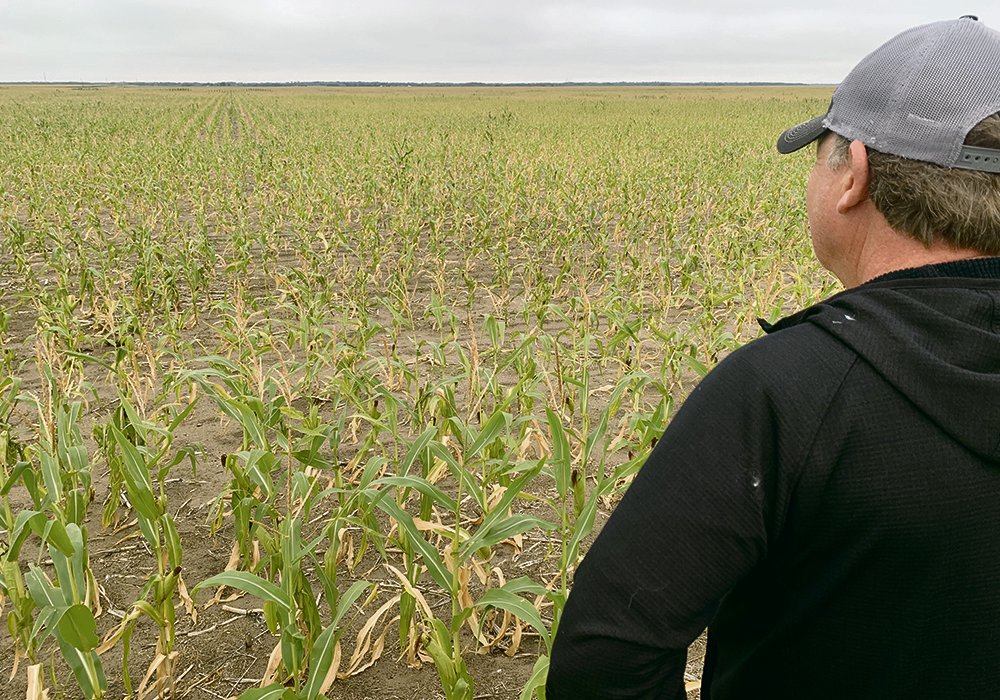Man. drought far from over despite recent rain

Precipitation in last six weeks has been welcome but not enough to compensate for a year of exceptionally dry weather
Manitoba is finally green.
From April to early August, lawns, pastures and hay crops looked dead and brown in much of the province. However, thanks to above average rainfall in the last six weeks, the brown colour shifted to green.
The green lawns and pastures are nice to look at, but the colour is deceptive because southern Manitoba remains in a drought.
As of Aug. 31, Agriculture Canada’s Drought Monitor showed that the farming region of Manitoba is in a severe or exceptional drought.
That classification isn’t surprising. The period from the late summer of 2020 to the early summer of 2021 may have been the driest nine to 12 month stretch on record in Manitoba and North Dakota.
Adnan Akyuz, a climatologist at North Dakota State University, has analyzed the precipitation data for this year’s drought. It shows that North Dakota and much of Manitoba received less than normal precipitation for 12 consecutive months.
“In August, it is the first time that North Dakota has received above normal precipitation since August of 2020,” he said from his office in Fargo.
“(For) 12 months in a row, from August 2020 to (July) 2021, it was below normal.”
In a Sept. 9 drought update, Akyuz compared 2021 to the 1930s, 1988 and other periods of extreme dryness in the northern Plains. The six months leading up to April were the driest on record in North Dakota, even more severe than conditions in the 1930s.
The situation was similar in southern Manitoba as many farmers struggled to get a crop in the ground this spring.
“We’re seeding into dust and we stopped seeding yesterday,” Melissa Atchison, who operates a cattle ranch and grows annual crops near Pipestone, Man., said May 15.
The dry conditions continued into July but soil moisture bounced back in August, helping pastures recover across the Prairies and northern U.S. Plains.
The rainfall in the last six weeks has been welcome, but it’s not enough to compensate for 12 months of exceptionally dry weather.
“(In) much of southern Manitoba … long-term drought remains a concern,” says the Canadian Drought Monitor report for Aug. 31. “Nearly the entire northern portion of the agricultural area and all of agricultural Manitoba reported a one-year precipitation deficit of more than 140 millimetres.”
The deficit is most noticeablein the soil at depths below 25 centimetres.
Manitoba Agriculture tracks soil moisture levels at its weather stations across the province.
The moisture at a particular station doesn’t reflect the conditions in an entire region because the type of soil at the weather station could be very different from soil 10 kilometres away.
Nonetheless, the weather station data indicates that soil remains dry at depth:
- In Russell, soil moisture is 24 percent at 50 cm and 11 percent at 100 cm.
- In Manitou, it’s 20 percent at 50 cm and 18 percent at 100 cm.
- It’s better in Rivers, where it’s 23 percent at 50 cm and 33 percent at 100 cm.
Consistent rain will be needed over the next six to eight weeks, before freeze-up, to re-charge subsoil moisture. Looking beyond this fall, Akyuz is convinced the northern U.S. Plains and likely the Canadian Prairies have entered a dry cycle.
“The answer is an easy ‘yes,’ ” he said.
“Based on the historical data, it is pointing that way.”
In his Sept. 9 drought update, Akyuz included a chart that tracks periods of drought in North Dakota over the last 100 years. It shows that the late 1980s and early 1990s made up the last, multi-year stretch of below normal precipitation in the state.
A switch from a wet cycle to a dry period is overdue and there are natural signs that conditions have changed.
“Since 2019, the Red River has been flowing below average,” Akyuz said.
“This is the signal indicating we are getting into a dry period.”
For more content related to drought management visit The Dry Times, where you can find a collection of stories from our family of publications as well as links to external resources to support your decisions through these difficult times.
Source: www.producer.com


